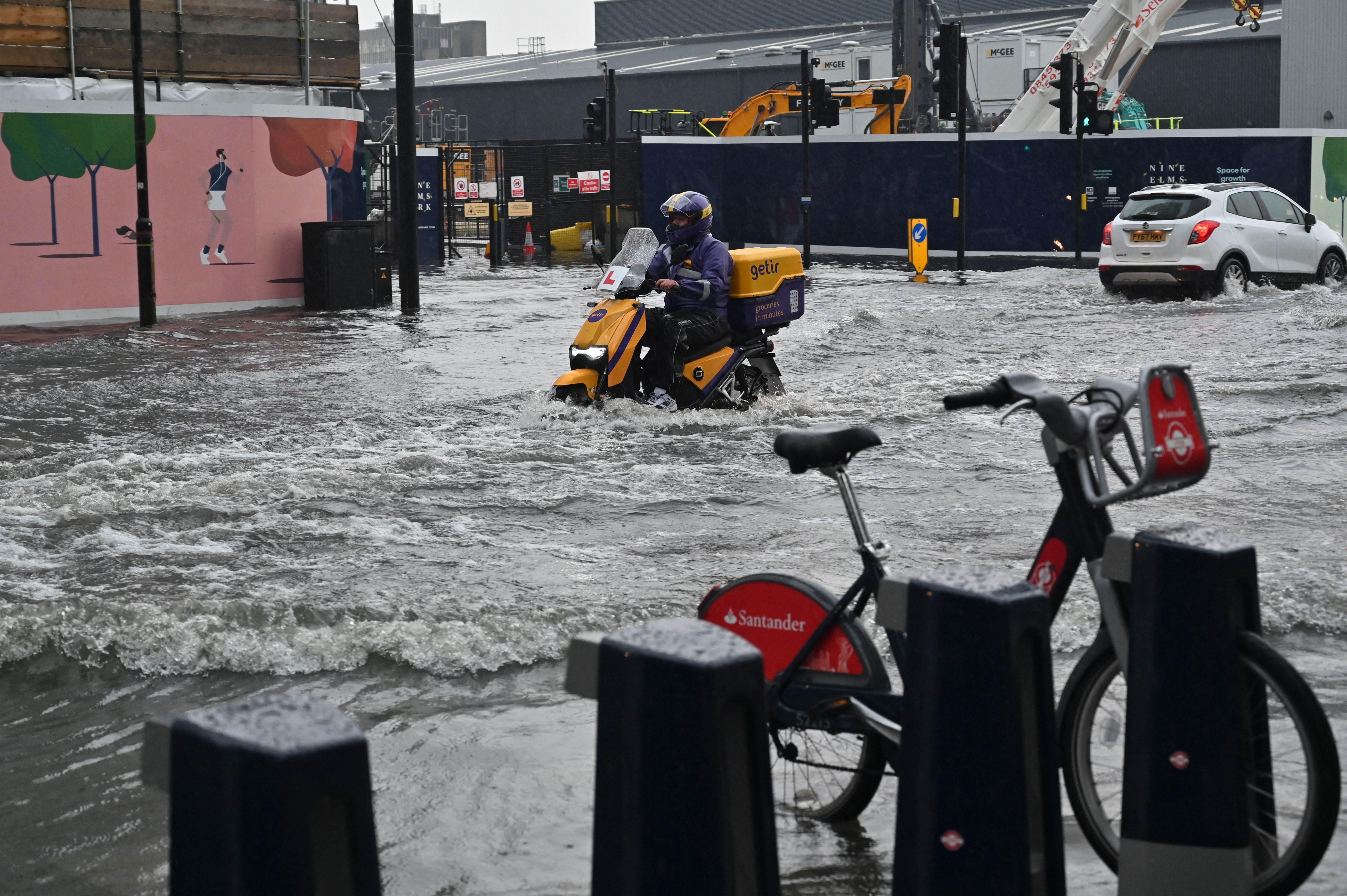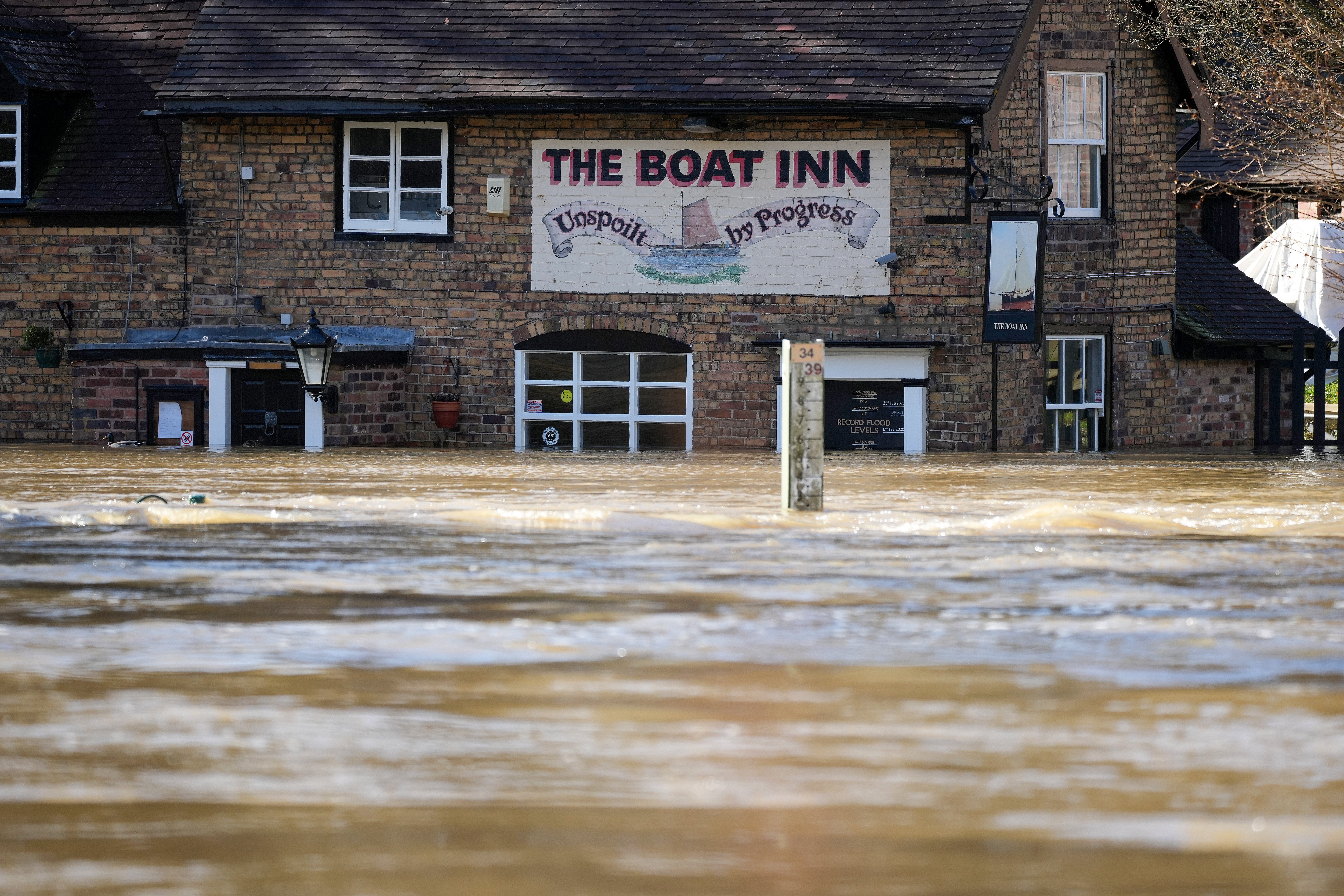Top 10 areas of Britain most at risk of flooding due to climate crisis revealed
Exclusive: New research using climate crisis data has identified the 10 areas of Britain expected to be the most at risk of flooding by 2050

Your support helps us to tell the story
From reproductive rights to climate change to Big Tech, The Independent is on the ground when the story is developing. Whether it's investigating the financials of Elon Musk's pro-Trump PAC or producing our latest documentary, 'The A Word', which shines a light on the American women fighting for reproductive rights, we know how important it is to parse out the facts from the messaging.
At such a critical moment in US history, we need reporters on the ground. Your donation allows us to keep sending journalists to speak to both sides of the story.
The Independent is trusted by Americans across the entire political spectrum. And unlike many other quality news outlets, we choose not to lock Americans out of our reporting and analysis with paywalls. We believe quality journalism should be available to everyone, paid for by those who can afford it.
Your support makes all the difference.Cardiff, Windsor and parts of London will be among the local authorities most at risk of flooding by 2050 when factoring in the climate crisis, according to new data shared exclusively with The Independent.
The new research by Bristol-based flood-mapping business, Fathom, is based on the first model to use climate crisis data to predict which areas will be the most at risk of flooding due to rivers or heavy rainfall (non-costal) in Great Britain by mid-century.
The 10 local authorities expected to be at risk are listed below. The percentages, measured against the previous assessment made in 2020, indicate the proportion of properties at risk of non-coastal flooding in any given year.
The model defines risk as having a greater than 1 per cent chance of non-costal flooding in any given year, a standard measure, according to Fathom.
- Cardiff, Wales – 17.09% of properties at risk, up from 15.06% in 2020
- Windsor and Maidenhead, England – 16.18%, up from 14.61%
- Warrington, England – 14.36%, up from 13.28%
- London borough of Barking and Dagenham, England – 12.31%, up from 11.56%
- Neath Port Talbot, Wales – 12.20%, up from 7.88%
- Scottish Borders, Scotland – 10.57%, up from 9.24%
- Rhondda Cynon Taf, Wales – 9.31%, up from 7.95%
- West Berkshire, England – 9.02%, up from 8.20%
- London borough of Greenwich, England – 8.92%, up from 8.52%
- Clackmannanshire, Scotland – 8.72%, up from 7.45%
The new research finds that while there are around 1.09 million properties across Great Britain currently at risk of flooding, by mid-century this will rise to 1.35 million, an increase of nearly 25 per cent.

However, this also means that around 75 per cent of the properties at risk by 2050 are already at risk today, according to Professor Paul Bates, Chair of Hydrology at the University of Bristol and co-founder of Fathom.
Nine out of 10 of the local authority areas are on the most recent list of the 10 areas with the highest risk of flooding, although there are some changes in their ranking. Only Clackmannanshire in Scotland was not on the 2020 list, while Denbighshire in Wales was.
That is not surprising, according to Dr Bates, because the climate emergency is more likely to exacerbate flooding in current flood-prone areas rather than putting entirely new places at risk.
“There is often this narrative in flooding that we’re going to have disastrous floods in the future,” Dr Bates told The Independent. “That implicitly suggests that we’ve got the problem under control now, which we really don’t.”
“Yes, climate change does increase flood risk in most parts of the country, but actually most of the risk is already here with us today,” he added. “If we dealt with the now better, we’d put ourselves in a much better place to deal with climate change.”

If you look at the places in Great Britain that are mostly at risk, South Wales and places along major rivers are most noticeable, but flood risk is everywhere and depends strongly on local geography, according to Dr Bates.
He added that the data suggests a notable jump in the risk in Neath Port Talbot, and this is because of the number of properties in the region currently just on the edge of flood risk zones that will be brought into the flood plain.
While flooding is expected to increase in most parts of Great Britain, there are some areas, such as Lincolnshire, where inland flooding will actually decrease, according to the data.
“We see this pattern because of the complex interplay between increasing rainfall and warmer temperatures,” said Dr Bates. “In some eastern counties warmer temperatures mean drier soils at some times of year, so even though rainfall increases it doesn’t necessarily lead to more flooding.”
In order to address future flood risk due to the climate crisis, Dr Bates said Britain needed to deal better with the risks the country faces today.
One way to achieve this, he said, would be by making properties that regularly flood more resilient so they are better able to cope. Tangible examples include installing tiled floors rather than carpet, moving electrical sockets up the walls above the flood line, floodproof doors and toilet bungs.
Investment in flood defences and warning systems would also help, as would no more developments on floodplains, he added.
The publication of the data comes as Flood Re, a joint initiative between the government and UK insurance industry to promote availability and affordability of flood insurance, launches a new scheme this month to ensure homes are more resilient against future flooding.
From 20 April, participating insurers will begin offering customers access to reimbursement costs of up to £10,000, over and above work to repair damage and loss caused by a flood. The funds will pay for the installation of flood resilience measures, such as raising electrical sockets, which will reduce the impact of future flooding.
Join our commenting forum
Join thought-provoking conversations, follow other Independent readers and see their replies
Comments